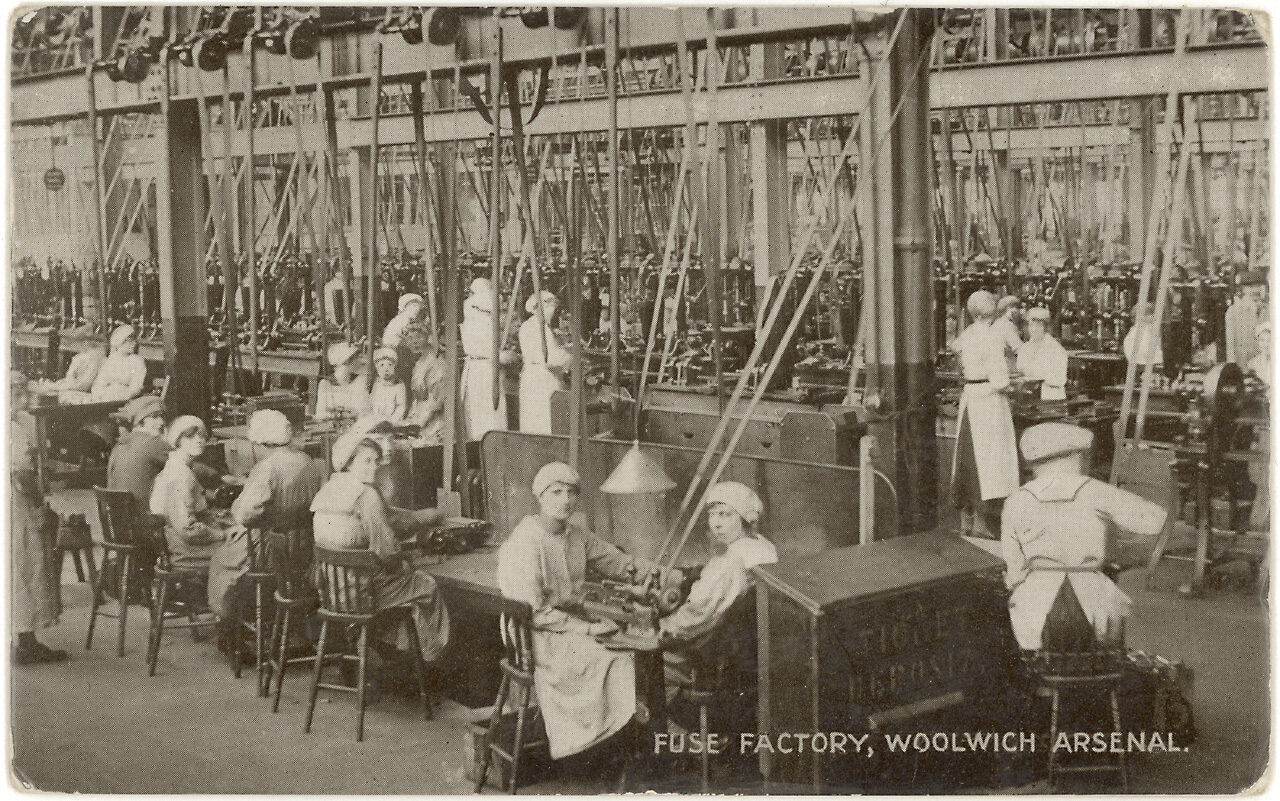Operations management is a useful piece of business jargon you’ll see bandied about in presentations, your COO’s LinkedIn page, and the resume of everyone in your HR department. But what does it mean to be an ops manager? Let’s break it down:
Operations management is the logistics chain for everything that happens in your business. Typically, ops people are the ones in charge of bringing efficiency to the workplace.
Everything from the layout of the desks in your office to the hardware and software you use, to the handling of relationships between material or service providers that your company works with, and even what kind of TP your office keeps in stock is taken care of by someone in ops.
So now that you know what it is, it’s time to learn about why good ops management is the cornerstone of a successful business. After all, you can make the best product in the world, but if you can’t get it to your customers, your business is going to be hurting.
For most businesses, scale is everything.
Simply creating something wonderful is just the start. Success lies in the ability to take a single good idea or much-loved product and:
- Develop a supply chain
- Produce it in large quantities
- Distribute it widely
- Measure customer satisfaction
- Adjust product offerings accordingly
It's the difference between being an excellent cook and running a successful restaurant. Everything involved along the way is part of learning to scale and extend the reach of your product or service. No matter what kind of business you start or run, chances are operations management (or ops management) are taking up a lot of your time. And while there are lots of tools and solutions made to help streamline the processes, you still must understand some of the basics.

The industrial revolution kicked it into high gear, as mass production
and mass consumption created problems of scale.
From then to now: a brief history of operations management
The first person who ever decided to buy, trade, or sell something of value for something else was the first operations manager. How to set value? When to deliver? What about unhappy customers?
As commerce matured around the world, business got more challenging. Trade routes, technology, new tools—each development made operations management more complicated. The industrial revolution kicked it into high gear, as mass production and mass consumption created problems of scale. Innovation was a net benefit, but that impact wasn’t evenly distributed.
A classic example is the move from steam-powered turbines to electric machinery in large factories in the early 20th century. Factory owners were promised substantial productivity gains, made the investment, and then waited. They were mostly disappointed. It took a new generation of plant managers for those promised benefits to materialize. Why?
Solving the productivity paradox
The problem with a steam turbine upgrade is that it was done in isolation. It was the next generation of managers who realized that electricity gave them the freedom to redesign the flow of work inside the factory radically. They could place the machines where work could be most efficient, unbound by the old rule of steam mechanics. Finally, company owners began to see the significant gains they had promised.
This captures the heart of operations management. Finding ways to fine-tune processes, bringing flexibility to decision-making, and keeping things coordinated would enable higher revenue by either growing sales or reducing the costs of production. As technology got better, incremental gains slowly turned into significant competitive advantages.
The rise of digital (and data)
The 1990s saw ops management take probably the most significant step forward thanks to the Internet—and here we are today. We live and work in a world where more data is being gathered more frequently across nearly every process and transaction. Ideally, this should mean we know more, move faster, and make wiser decisions. And, if we’re willing to learn the basics, we should be able to multiply knowledge by the power of the technology and reach a new standard in modern operations management.
But it’s a big idea, huge in fact. One of the easiest ways to explore it is to walk through the pieces of the puzzle.
1. Product design and build
Step one in any business: choose your product. No matter what it is, you need to build it. And that’s three separate challenges:
- Physical product: what it is, how/where it gets made
- Financial product: how will you price the product, what profits do you expect
- Marketing product: how will the story be sold, what is the messaging and branding
Quality Control
You’re building stuff, but is it any good? Quality control is a crucial attitude, but the difference must be processed. As scale increases, quality standards become vulnerable. In tight markets, one quality mistake can be devastating. So best practices here, in hiring, training, process design, and technology, must be part of any comprehensive operations management plan.
Distribution
Quickly moving products to customers is essential for a lot of reasons. Inventory must be stored, so organizations look for ways to reduce these costs. And how quickly must our distribution operate? In the Amazon age, shipping time can be a competitive differentiator. Even if you don’t ship fast, delivery at scale is still a significant constraint.
Sales and Marketing Operations
We talked about three product dimensions—and one of those is marketing. How do you find, convert, and retain customers? How do you maximize the amount of time your salespeople have in a day? As with everything you need to:
- Understand who’s buying
- Understand why your customers choose you
- Reach customers with relevant messages on the right channels
- Keep up with evolving expectations
- Battle attrition
Customer Management
Core to sales and marketing is customer management. But it’s got a business function, too—matching a person to an organization to a bank account to a purchase order. Any system here will be a central nervous system to ongoing modernization, establish a core system of record.
- Sales operations
- Marketing operations
- Customer management
Asset Operations
Where does your business live? Who do you employ, and how much do you pay them?
- Finances facilities
- Human relations
- Informational technology
These are the core challenges of managing the physical, human, and virtual assets. How bills get paid, and people get hired and developed. How do you meet compliance requirements? Bottom line: how do you stretch every resource while boosting performance across all these metrics?
Each of these disciplines is a lever. Together, they can run these pieces in ways that serve different purposes. A business built for rapid growth looks operationally different than one designed to maximize product innovation. Each business model is a machine and can be made in different ways. Or at least these levers can be operated to optimize for a core function. Ultimately, this is the product of your business—what you sell is secondary when it comes to operations.
Planes of control
When it comes to operations management, no matter what you’re trying to optimize for, you need to be able to impact as many variables at once. These are the cogs in the machine. By influencing how they interact and operate, we achieve some of the optimizations we’ll discuss later. So, if you’re keeping track of operational challenges, we need to multiply the complexity of each discipline by the depth of detail introduced here.
The good news is that if you’re familiar with the enormous B2B software market, you know these are also all big market categories with a lot of useful technology choices. But it’s up to you to assemble and integrate technology in ways that optimize for your desired outcome. But more on that later.
While there’s probably a tool made to optimize every aspect of your operations, we can divide most of the technology up into categories that loosely map to different phases of operations management.
Workflow management
How do people move product from one phase to another? How do they communicate on the status or assignment of a task? Workflow management is about finding tools that automate process tracking and report back. This gives all stakeholders the visibility they need into all the processes that impact their domain.
Inventory analysis
How much product do we own, and when are we getting more? Do we have too much? Inventory is both a liability and an asset. More in-depth intelligence into both quantitative and qualitative insight is vital.
Supply chain/manufacturing resilience
From where are products coming? Where do we get pieces? What happens if a supplier goes out of business? Supply chain quality can make or break a business, and compliance rules make for even more complexity.
Marketing insights
Sometimes waiting for a customer to tell you what they want means it’s too late to deliver. Getting access to information about market trends and preferences can help product teams move to the right ideas sooner. They can also help sales and marketing teams prioritize their efforts by capitalizing on new information.
2. Real management is about orchestration
What are you ultimately optimizing your organization machine to do? What’s your plan for orchestrating all the moving parts to create something magical?
We are lucky to live in a world that gives us a connection to endless answers. We have over a century of scholarship under our feet and infinite technology possibilities at our fingertips. We should be creating ways of working that are both bold and best-in-class. It’s about combining and recombining technology, people, information, and mindsets in ways that enable a business to achieve the key benefits of successful operations management listed here.
Pure speed
For lots of organizations, speed alone is a big enough benefit to make them invest in change. No matter the cycle, what if you could close it sooner? Whether it’s step-change improvements or increments that add up over time, improving operational velocity lets you focus more resources directly on producing revenue. Every time they wait, it costs money, and it adds up fast.
Integrated efficiency
Efficiency is about maximizing the value of each resource. If we have eight work hours, where does it go? If we can build two clouds, how do they balance? How do shipping and billing share data? The ability to streamline produces, remove bottlenecks, and operate with shared resources. It’s also a critical operational lever because improvements achieved via efficiency can be put towards quality and innovation.
Innovation
While innovation is about art and a science, it is possible to operationalize for it. This might be investing in digital solutions that reduce the costs of risk and ideation or only driving adjacent innovation by reorganizing how teams create and collaborate. Systems must be optimized to give stakeholders time to experiment with vision and value over volume and time to market. Large companies solve for it by sometimes creating smaller labs or spin-offs. But ultimately, it’s about a combination of tools and perspectives that’s unique to a business.
Quality
Sometimes you need to produce the best of the best. Or you need to tell a story about product quality so deep it’s a defensible differentiator to be used by sales and marketing operations and their partners. This is where you arrange parts to focus most of your energy on sourcing and manufacturing. This is where your highest-paid roles work; this is where you ‘hang your hat.’
The universal advantage: learning
It doesn’t matter whether you want to run fast, slow, with differentiation or not. Any operational strategy is made better by a commitment to building a learning organization. This will enable you to optimize as the future dictates quickly. You’ve created an organization where people measure to learn a lesson, and those lessons turn immediately into change.
- People need to be empowered to learn across disciplines
- Processes need to be built around relatively fast, transparent loops
- Lessons learned in these loops must directly drive a better way to do it next time
- The organization must be ready to learn from peers
Technology is letting us do this better too. But we can’t wait for machine learning to do the work we need to do today. Because changing a business means new skills and risks. Knowledge will always be the best way to manage both of these gaps, whether its students or systems.
Standing in the way: the challenges
So, you’ve got more tools and expertise. You’ve got a culture of operational excellence, or you’re determined to build one. What stands in the way of achieving true operational excellence?
The iceberg: change management
Technology often feels like an easy fix. But deployed in isolation, without planning for adjacent impact, it can quickly lose its impact. That’s because there are non-IT challenges to solve for when ‘innovating.’
- Cultural psychology
- Team-wide communication
- User training and support
- Meaningful metrics
Technology is the deceptively small tip of the iceberg. It’s critical to find partnerships and perspectives that are always focused on the big picture. And it’s also essential to find small steps upon which success can be achieved and then built. It’s going to be steady persistence that eventually pays exponential dividends.
Widening gaps: skills and technology
Changes in business and technology have opened new challenges and opportunities, exposing weaknesses in your current teams. This means either finding new talent or making sure your learning culture is nurturing the experts you need. It’s a powerful blend of both technology and information, relying on very narrow bands of knowledge. Change can also snap rigid IT infrastructure, so investing at a meaningful pace ensures you’re always maximizing your dollars.
Tunnel vision: looking far and wide
Like the learning organization itself, the leadership culture should be willing to seek lessons where they happen. This means looking across traditional industry divides to learn how peers have solved operational challenges that are both unique but also fundamentally common. Technology is a powerful lens for doing this—how are similar sounding problems being solved?
Getting it right
Now that you understand the fundamental challenges in front of you, and know a little bit more about how you can adapt to solve for them, it’s time to start looking for places in your operations structures to deploy your new expertise.
Every business has unique ‘low-hanging fruit.’ This is what makes operational management optimization so tricky—learning the right lessons for the right reasons, from the correct source. Partners here make all the difference. They’ve seen similar businesses face similar constraints, each optimizing for specific business outcomes. They can help you understand technology benefits and costs, as well as understanding the fundamental human dynamics at play.
That’s what we do
Luckily, Kintone can give you the knowledge about the integrated system you need to redefine operational best practices across the business. Process by process, interface by interface, we can help you understand what’s working and what can be optimized. We can also help you navigate the immense universe of technology choices that can either help or add additional complexity and cost.
We’re in the business of helping businesses get better. And it all starts with how they operate.
About the Author




![[Webinar] Project Management Pitfalls & How To Avoid Them](https://no-cache.hubspot.com/cta/default/1857320/c2570f0a-2a03-4b50-ad4d-d47705da01ae.png)







